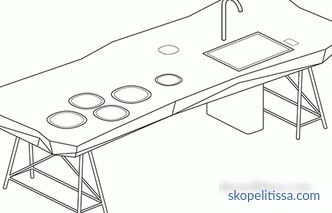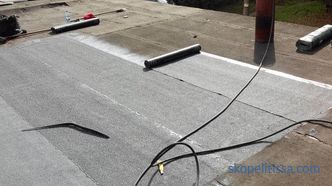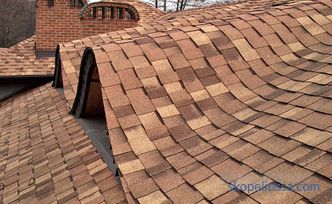Italian design studio Tipic created a smart kitchen worktop that combines various interactive features, including a sink that appears on the surface after a simple hand gesture.
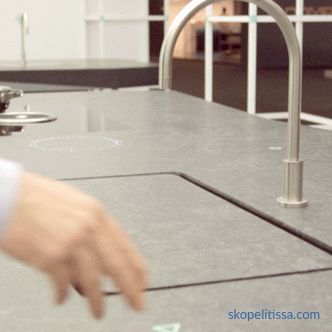
Everything is regulated by hand gestures over a single sensor
One of the brightest exhibits at the EuroCucina furniture exhibition that takes place twice a year in Milan, the Tulèr kitchen from the Tipic design studio has become. The tabletop in their creation is made of quartz composite, which has a lot of technological solutions embedded in it, which greatly simplifies the work in the kitchen.
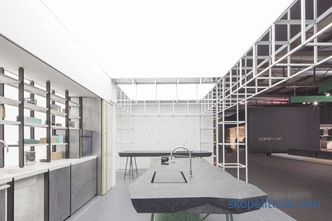
The worktop is made of a single piece of quartz composite
A smart kitchen is still only a laboratory stand, not included in the series, but already successfully demonstrating some developments in terms of design. The centerpiece here is the sink, the base of which is flush to the tabletop and, in an inactive state, appears to be part of the surface.
When the kitchen needs a sink, it is enough to make a circular motion with your hand over the sensor built in close to the tap. This activates the piston mechanism and a portion of the table top goes down, forming a sink. The role of the sensor does not end there - with the following gestures you can turn the water on and off, as well as regulate its pressure and temperature.

In the inactive state, the sink is just a part of the table
"We thought that the kitchen sink was not needed all the time, but it means that the space it occupies can be used for other purposes. Then a simple gesture with a hand and magically appears on the countertop of the sink, "says Tommaso Cora, founder of the Tipic studio, in an interview. “That is, until you need a kitchen sink, the surface of the countertop is even and easier to use. This solution is easy to launch in the series, since we have created something new, but using existing technologies”
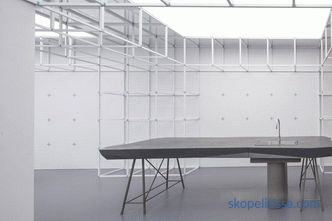
The revolution is not in creating a new one, but in rethinking the old
In addition to the smart sink, the tabletop contains other elements that are necessary in the kitchen. For example, a pressure sensor that is used to weigh the ingredients of prepared dishes. On the surface, this is displayed as a luminous ring, which changes its color from blue to red, thus showing a weight of up to two kilograms.
Over time, designers expect to connect this device to an application that will automatically recalculate the amount of ingredients if it is necessary to prepare a recipe for more or fewer people.
A similar luminous circle, but smaller, indicates the space reserved for the wireless charging station of a phone or tablet.
The founder of Tipic Studio said that such a design could be a glimpse of the kitchens of the future, although he acknowledged that most brands do not want to invest in "the risk of researching something new."
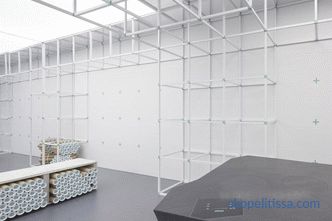
Additional elements are highlighted only on the tabletop
"The idea was to push the system and what you know about the kitchen. But at the same time, not doing something strange that brings a sense of unnaturalness to the kitchen, ”said the founder of the Tipic studio, Tommaso Cora.
"Yes, we widely use sensors, but this is far from futuristic. The new is in combining elements, which gives almost unlimited scope of imagination. We will definitely present other solutions - Tulèr kitchen is just the beginning."
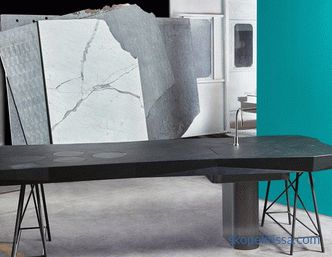
The overall layout of the worktop Tulèr
Swedish-German design studio Kram / Weisshaar is also exploring the potential of smart kitchen surfaces. The thin tabletop SmartSlab for the brand Iris Ceramica, also presented during the designer week in Milan, has a hidden scheme under its ceramic top. Built-in appliances allow not only to cook food, but also to keep the plates warm until the homemade ones are ready for the table or cold drinks during lunch.
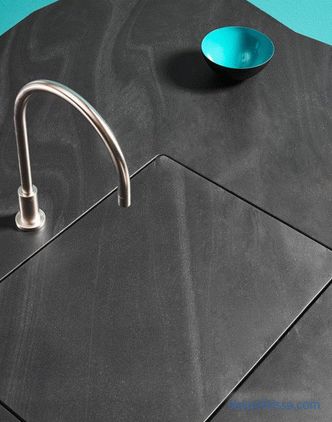
If the sink is not needed, it does not take the place of
Like the SmartSlab surface, the tabletop Tulèr can also be equipped with induction cooking rings embedded in the surface, although the company notes that designers have not completely finished this element.
"We study which materials are more suitable for transmitting an induction field, but at the same time that they are not affected by the temperature of the dishes, which are heated by this field," Cora says, "because the radiating surface itself is not hot, but it is heated by the dishes in which the food is cooked. "
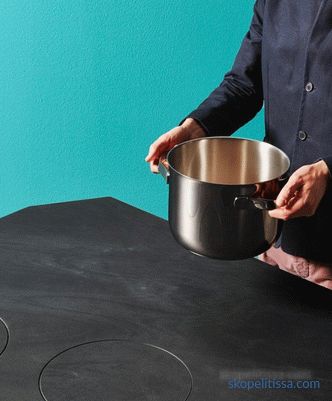
The surface of the pan heats up even when using an induction cooker
Power supply to the power wiring and information processing from the sensors performs hidden Inside the countertop is a computer system.The tabletop itself rests on thin metal legs, made in the form of a trestle, and the column under the sink also hides in itself the pipes through which water is supplied and drains are discharged into the sewer system.
The nominal clever tabletop of Tulèr was created for the new research brand Offmat, which is also owned by the design studio Tipic. In addition, Marmo Arredo, a producer of decorative stone and marble, which also owns Quartzforms in Germany, is interested in these studies.
Tipic began working with the company initially to develop new composite quartz materials. This will allow customers to offer stone and marble coatings of different quality and color instead of just imitating natural stone. The Tulèr kitchen is the development of this research.
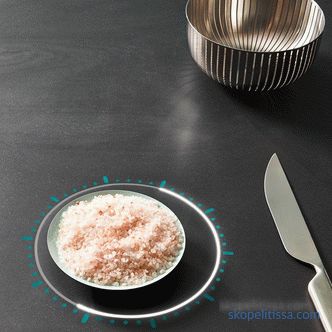
The scales are built right into the surface of the countertop
In other parts of the kitchen there are also small built-in technological elements, such as robotic mechanisms for closing and opening drawers, but the main efforts of designers are aimed at improving the convenience of working with the surface itself.
"The tabletop is the place you interact with the most while you are in the kitchen. In addition, it is also part of the kitchen itself, and therefore requires the most elaborate technological solutions. It should not absorb water and to be resistant to aggressive substances that are contained in products and detergents, and besides, it should not be spoiled by a sharp knife - that’s what we focus on first and foremost, ”says the founder of Tipic Studio, Tommaso Cora.
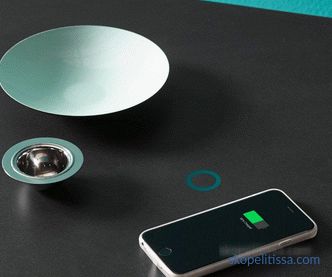
The developers did not forget about wireless charging for mobile gadgets
Tipic was founded in 2016 by Italian designers Tommaso Cora and Paolo Festa. Cora was previously the general director of the Cibic Workshop research center, an Italian design studio run by Aldo Chibich. Festa, in turn, worked on the development of the Italian brand Arclinea with designer Antonio Sitterio.
Two working prototypes of the Tulèr kitchen were displayed at the Eurocucina exhibition. The manufacturer calls it only the first step in popularizing new trends, which will make them attractive for mass production.
